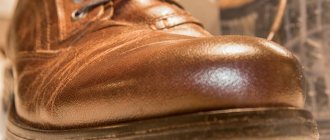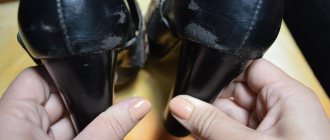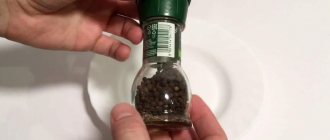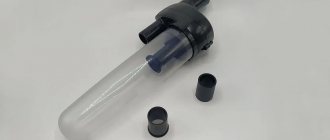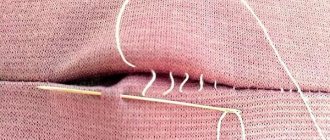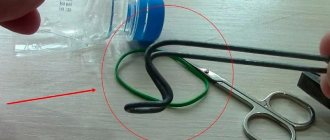Where to begin
A dispenser on a bottle of vodka or whiskey allows you to conveniently pour drinks into glasses. It is usually made of plastic. The item works like a valve: it’s easy to pour the drink out of the bottle without anything getting inside. This element protects customers from counterfeits and facilitates the process of filling glasses.
Original bottles from Jack Daniels and other designer containers can be easily adapted for homemade liqueurs, as well as used for decorative purposes. Simply remove the plastic element from the neck.
It is important to act carefully so as not to break the glass container.
Use Cases
There can be dozens of applications for such a useful thing, and I will give only a few that come to mind. And you will understand how useful and even irreplaceable this thing is!
We invite you to read: What are household kitchen scales for, how do they work and what are they?
The dispenser nozzle can be applied:
- For mixing cocktails, alcoholic and non-alcoholic drinks.
- For dosing sunflower oil, sauce, vinegar, etc.
- For dispensing glue.
- Like a funnel for filling small volumes.
- Like a pastry syringe, if you cut off the neck of the bottle and put on a bag with a lid. Decorate cakes and cover with icing.
Can even be used in the garage: as an oil can. In general, there are a lot of applications, I think you will understand this yourself.
Why do we need alcohol bottle dispensers?
- Provide reliable protection against refilling of glass containers, such as liquor bottles.
- Promote reliable sealing due to the tightest connection with the neck.
- Allows you to achieve increased comfort during pouring due to pouring from the outlet in any radial direction.
- Helps achieve a consistent stream without air bubbles.
The introduction of bottles with dispenser caps into production allows us to reach a new level of production and helps demonstrate the high quality of closure systems. The unique closure system attracts the attention of buyers with its beautiful design using embossing or silk-screen printing.
What is the difference between a plastic cap with a dispenser and an aluminum screw cap?
Polymer closures, unlike metal screw closures, have increased strength. The latter are made of thin sheet of aluminum. If the conditions of acceptance, unloading and transportation are improper, the screw cap may be damaged and the contents of the bottle will simply leak out. Such cases have already been recorded at enterprises, and as a result, many companies suffered losses, albeit minor ones.
The most important difference is that screw closures are not equipped with a re-opening protection system, unlike modern polymer closures with a dispenser. At the same time, the cost of metal closures is higher than polymer ones. When purchasing large volumes of closures, the difference becomes obvious. In addition, polymer closures do not oxidize and do not react with an alcoholic product, which cannot be said about aluminum stoppers.
The undeniable advantage of plastic and screw closures is the ease of opening and closing. Compared to cork, no special device is required, which is very convenient and practical. Almost everyone knows how to open a screw plastic lid. It only takes a little effort.
Plastic
It is recommended to rinse the plastic to remove any remaining food or grease. If promotions accept different types of plastic, it is better to separate it by type (read how to do this here).
Plastic should also be reduced to a minimum volume: for example, bottles should be crushed. You can also remove the covers from them. If the labels on the bottles are easy to remove, then it is advisable to remove them as well. Do not fill plastic bottles with other plastic (bags, etc.).
Divide the bags and film into two types: only colorless, without drawings or paint, and everything else.
Waste paper
Waste paper can be divided into corrugated cardboard and everything else. Paper must be dry to be recycled.
It is better to fold the sorted piles as tightly as possible and, if possible, tie them with rope.
It is necessary to separate metal springs (from old calendars, notebooks), and also remove files, tape, and paper clips. A clear plastic window should be cut out of the envelopes.
Glass
It is recommended to rinse the glass and, if possible, remove the caps, dispensers and rings on the neck. It is advisable to put the broken glass in some container (for example, in the same glass jar).
Tetra Pak packaging
The packaging must be rinsed so that there is no odor or contents left behind, and then crumpled. For ease of washing and storage, the packaging can be cut.
Metal
Metal debris should be washed or rinsed to remove food and drink residues, then dried to remove moisture and, if possible, flattened. It is also advisable to remove labels from cans.
Batteries
Batteries must be carefully packaged to avoid damage during storage and transportation - at least put in a waterproof bag. Do not store batteries in metal containers. Use tightly sealed plastic boxes or special containers to store batteries.
Detailed instructions with illustrations on how to properly prepare recyclables for the campaign and how to sort waste in general can be found in a special brochure
Subscribe to our channel in Telegram!t.me/recyclemagru
Source: https://recyclemag.ru/article/ekoinstruktsiya-pravilno-gotovit-vtorsire-sdache-punkt-priema
Criteria for correct selection
Diameter
The main part of the bottles has a diameter of 1.6÷2.4 cm. In this range, you should look for an accessory, provided that there is no need to adapt to a specialized neck.
The diameter of the internal rod may differ in different designs, but it does not affect the given figure.
The exit holes do not have a wide range of indicators. Thick drinks and liquids require wider nozzles. Medium sizes are considered popular.
Dosage
To create cocktails, recipes with standard portions of drinks are used, so the main parameter when choosing is the specified volume in milliliters.
Material
Practicality combined with high quality dictates the requirements for manufacturing materials. Stainless steel is most often used in combination with plastic, wood and food grade plastic. Economy class options are represented by models made of food-grade plastic and silicone.
Design
The dispenser system consists of the following elements:
- spout - for fluid flow;
- air duct - reverse air flow ensures consistent and smooth flow;
- seals - to prevent leakage from all sides of the neck.
The presence of rings of several stepped diameters allows the device to be used on bottles with different necks. Plastic standard geysers provide good flow rates and are very popular due to their low cost.
Professionals note their special functionality with chilled thick drinks, for example, Baileys, Goldschlagger, Jaggermaister.
The chrome Cammon Pourer models look impressive and are as fast as the flow rate. Shielded versions are more often used in public establishments to prevent insects from getting into the drink. However, it is not recommended for thick substances.
The best manufacturers
The most popular brands for professionals are:
- Probar and Prohotel 5 mm geysers are sold in sets of 12 pieces and separately;
- Paderno 45 ml;
- Uken 10 ml;
- Bonzer 40 ml.
Errors in selection
A distinction should be made between a dispenser and a stopper. Despite their external similarity, the main difference is the narrower functionality of the stopper, which consists only of blocking leakage and preserving aroma without interacting with air. If the air pin is too short, then it is not recommended to use the nozzle on syrups or thick compositions. In addition to the weak flow, frequent washing and cleaning will also be required.
For sweet and buttery textures, it is better to choose designs with wide spouts that both flow and are easy to clean.
Is it possible to remove the dispenser from a vodka bottle?
11/21/2018 Manufacturers of closures offer improved modifications to dispensers for glass bottles. Unique models are manufactured at modern automated stations in accordance with the provisions of GOST. They are distinguished by good tightness, sufficient mechanical strength and reliability. With their help, you can create beautiful decorated caps that will attract consumers.
Types of caps with a dosing element
- Closure with a retractable spout. Used in the production of shampoo and liquid detergents.
- Cap with a special mini-lid and a hole for dosing. Used for alcohol-containing products, vodka, liqueur, rum.
- Device with feed heads. Used on various tubes or bottles. The liquid flows out by rotating the cap.
- Sprays, atomizers. They are indispensable for extracting all kinds of creams, emulsions and other liquids that have low viscosity.
Aerosol valves can also be used. All models differ in their functional features and design. More detailed information on each closure can be obtained from the manufacturers.
Comments
twist and pull up))) this is how it opens
beloved daughter
6 years 6 months
there is a button there. you need to make a few turns and it will pop out
beloved daughter
6 years 6 months
I did a million revolutions and that’s it...
maybe something is broken there... try either pressing and twisting, or vice versa, pulling and twisting... or have you already opened it?))
beloved daughter
6 years 6 months
no it doesn’t work out anyway!!!
Then marriage
And I couldn’t :-):-):-):-):-):-)
I couldn’t open it either, my husband opened it, and I still don’t know how he did it))))))
Effective ways to open a bottle of wine without a corkscrew
Method number 1. Push the plug in with your finger.
This method is more suitable for those who are strong in spirit and finger, because you need to have remarkable strength. It also depends on the wine manufacturer and the materials used to make the cork. You can simply push the cork with your bare finger or place a small coin on it, thereby increasing the area of pressure. You can also first pierce the cork with a sharp object, a knife, for example, which will weaken it.
Method number 2. Push the wine cork using available objects.
The principle is the same as in the previous method, only instead of a finger, which is quite reasonable, you should use more durable cylindrical objects: a marker, lipstick, a knife sharpener (there are round ones) or a women's stiletto heel.
You can use a marker to open wine without a corkscrew.
Method number 3. Knock out the plug.
Using this method you need to be extremely careful, because often everything ends in a broken bottle, blood and scars for life. The easiest way is to simply take the bottle vertically and gradually tap it on the bottom with your palm - according to the laws of physics, the cork should fly out without any problems. If this does not happen, wrap the bottom of the bottle in a towel and knock it against the wall (control the force of the impact). You can also attach a towel or book folded several times to the wall (preferably a copy that does not have great cultural value).
I saw how the cork was knocked out with a plastic bottle of water. Just fill it and hit the bottom with the middle part. Sometimes a couple of blows are enough, but be sure to make sure that the cork does not fly out completely - the wine will spill. To enhance the effect, you can use your shoe: place the bottom of the bottle in your shoe and hit it against the wall (a video is attached at the end of the article).
Vessels and plugs
At first, people used animal stomachs to store drinks. Later, vessels made of skins, wood, clay and metal began to be used for this purpose. The containers needed to be sealed with something. After all, tightly closed wine does not come into contact with air and improves its taste over time. Corks were made from soft types of wood. They absorbed moisture, enlarged and broke the vessels. To solve this problem, the top part of the cork was filled with resin, coated with clay and wrapped in a rag. This is how amphoras were sealed in Ancient Greece. It was convenient to transport wine in these vessels. Archaeologists still find vessels with hardened wine inside during excavations.
Methods for girls
Ladies' methods of opening wine do not require special strength or skills in using household or improvised tools; even the smallest and most fragile girl can handle them:
- Push the plug using “feminine things” - eyebrow plucking tweezers, lipstick or mascara, eyeliner brush.
- Hook it up with hairpins or bobby pins.
- Turn on the water in the sink, place the bottle's neck under a strong pressure of hot water, wait until the stopper goes in deeper, close the tap, push the stopper in with your finger or a pen - it will go in easily.
- For lovers of fiction - lean the first volume of "War and Peace" against the wall over its entire area, creating a layer between the wall and the bottom of the wine bottle, tap the bottle on the book - the cork will slowly move and crawl out. This method is best suited for containers with a concave bottom.
Opening wine in unusual ways - video
https://youtube.com/watch?v=7rJ6J1lR1sA%3Ffeature%3Doembed
There are many ways to open a bottle of a precious drink without a corkscrew, and everyone will find the most convenient and comfortable for themselves. Nobody canceled creativity and the desire to experiment. Go ahead, you will succeed!
How to remove the dispenser: methods
The dispenser is plastic, which means it can be steamed.
How to remove a cork from a bottle, procedure:
- Pour water into a small saucepan and bring almost to a boil.
- Remove the aluminum trim from the neck.
- Place the bottle in the water upside down.
- Soak for a few minutes in hot water until the cork softens.
- Wear oven mitts to avoid getting burned! Carefully remove the dispenser from the neck.
If you can’t pull it out with your hands, use the blunt blade of a knife as a lever: pick up the edge of the dispenser and, leaning on the neck of the bottle, push it forward.
Miss Clean magazine notes that the dispenser easily returns to its place after refilling the bottle. It will fit just as tightly as before removal. Only after several procedures with boiling water can the material deteriorate.
What to do if the dispenser is installed inside the neck and it is impossible to pick it up with your fingers? And in this case there is a way to get rid of it:
- Prepare a strong metal hook.
- Fill the heating pad with hot water and wrap it around the neck of the container.
- Support the structure with a towel.
- After a few minutes, hook the dispenser and pull it out forcefully.
Some ball dispensers from imported bottles of tequila, absinthe, etc. cannot be picked up either by hand or with a hook. In this case, just use a knife: cut the element inside the neck and remove it in parts. It will not be possible to reinstall the dispenser.
Particularly confused people have adapted to pouring drinks even through a dispenser. If it is possible to remove the valve from a beautiful bottle, then it is better to do this: it will be faster and more accurate.
We remove the dispenser without problems
Next, unscrew the cap and remove the trim on the neck of the bottle (usually it is made of thin sheet aluminum). Then we immerse the bottle, neck down, in a pan of hot water.
It is advisable to pour hot water over the neck from another container (for example, from an electric kettle). Or you can simply turn the bottle over from time to time. You need to keep it in hot water for several minutes.
Then we take out the bottle and try to carefully pull out the plastic dispenser. Just don't use your bare hands - use a towel to avoid getting burned. In some cases, it is necessary to apply a certain amount of force.
For details on how to remove the dispenser from a bottle at home quickly and accurately, watch the video on our website.
Cool wooden stand for hot dishes
Site headings
- Aviation
- Auto and motorcycle
- Army and Navy
- Archeology
- Animals
- Health
- Celebrities
- Games
- Interesting
- Internet and computers
- Story
- Space
- Cooking
- Culture and art
- Fashion & Style
- Music
- Science and technology
- News
- Society
- Hunting and fishing
- Policy
- Nature
- Incidents
- Psychology
- Travel and leisure
- Entertainment
- Religion
- Rodnoverie
- Needlework
- Garden
- Homemade products
- Sport
- Construction and design
- Secrets and myths
- Economy
- Humor, jokes
- Sandbox
Close the border with Ukraine FOREVER, and never open it! Let this infection die out and n.
It is high time! Otherwise, the gas station operators have gone completely nuts.
Where there are crests, there is death and destruction.
Our sympathy to Margarita. Very sorry.
suck lard, fagots.
Baba is a fool - we need to give birth to children! Then the husband will have no doubts.
Advice: Sumerians, leave your phone at home and go wherever you want! Don't thank me! )))).
It will be funny if the Poles wake up and find out that they now live in the Polish province! :).
Zelensky is a sucker. Swallow it! :).
How to make a flower from balloons
legal information
Dear authors, remember that the publications you post must not violate the laws of the Russian Federation and the copyrights of third-party resources.
*Extremist and terrorist organizations banned in the Russian Federation and the Republics of Novorossiya: Right Sector, Ukrainian Insurgent Army (UPA), ISIS, Jabhat Fatah al-Sham (formerly Jabhat al-Nusra, Jabhat al-Nusra"), National Bolshevik Party (NBP), Al-Qaeda, UNA-UNSO, Taliban, Majlis of the Crimean Tatar People, Jehovah's Witnesses, Misanthropic Division, Brotherhood "Korchinsky, "Art preparation", "Trident named after. Stepan Bandera", "NSO", "Slavic Union", "Format-18", "Hizb ut-Tahrir".
Story
The Romans used oak bark to make corks. After the collapse of the empire, the lands on which this type of tree grew were captured by the Ottomans. As a result, this material was forgotten for a long time. The creator of champagne, the French monk Pierre Perignon, invented a universal cone-shaped cork.
Wine was not produced in Ancient Rus'. It was bought in other countries. In those days, any alcoholic beverage was called wine. The situation changed only after the Crimean Peninsula became part of the Russian Empire. In the 17th century, the production of glass vessels began. They could already be hermetically sealed using plugs. After the invention of the corkscrew, the shape of the plugs changed significantly. Wooden cylinders began to be pushed into the neck of the bottle.
How to choose
In this case, the choice of accessories depends entirely on the preferences of the bartender and the characteristics of his work. When purchasing a geyser, you should consider the following factors:
- features of the drinks in the establishment - their thickness, diameter, bottle necks;
- frequency of preparing cocktails;
- production material.
If desired, the user can decorate his workplace with beautiful bright dispensers, and neon glow-in-the-dark dispensers can also be found on sale. They look attractive and stylish. When preparing cocktails with the help of such accessories, the client will be able to enjoy a whole color show, in addition, thanks to neon signs, the bartender will be able to quickly determine the contents of the bottle in the dark and quickly find the required drink.
How to get it easily and quickly
So, prepare a small package and follow these instructions:
- Crumple the bag so that it looks like a thin tube and can easily slide into the neck of the bottle.
- Push the crumpled polyethylene inside the glass container, bottom first, to a depth slightly greater than the size of the cork.
- Now turn the bottle on its side and twist the bag so that the cork rolls up to the neck.
- Unfold the edges of the bag and begin to inflate it like a balloon. All this time, the cork should be near the polyethylene and not roll down.
- When the bag is inflated, it should press the stopper tightly against itself.
- Now your task is to carefully pull the bag out along with the stopper. This is not as easy to do as it seems, but it is quite possible.
- Ready! Now the cork and bottle are finally separated and both remain intact.
If for some reason you were unable to empty the bottle of its contents the first time, try again. You can even find a corresponding video on YouTube and go through in detail all the stages of extracting an item.
You may be interested: Mendeleev invented vodka - true or false? Origin and evolution of Russian vodka
Using other available tools
These methods of opening wine without a corkscrew require more skill and time to implement.
Screw and pliers
Take pliers and a screw, and the larger the thread pitch of the screw, the better. Make sure that all things that will come into contact with the plug are clean.
Take a screw with pliers, place it in the center of the plug and tighten it clockwise until 1-2 cm of screw remains on the outside. If you have strong enough fingers, you can tighten the screw without using pliers.
Perform the screwing process carefully so as not to break the plug. The screw must be positioned vertically in relation to the plug
Now pull the screw up with pliers, and the plug should come out with it. Instead of pliers, you can use any other object that can hold a screw, such as a fork
Pull carefully in a direction at an angle to your body so as not to hit your stomach with your elbow when the plug comes out. If you don't have pliers on hand, then wrap the screw with rope several times and pull it
Wire hook
This is another tool that can be used to open wine when you don't have a corkscrew. To understand how to properly open wine with a wire hook, do the following:
- Get somewhere a piece of stiff and not very thick wire. For example, a wire coat hanger would be a good option;
- Make a small hook from this wire: using pliers, bend approximately 1 cm of the end of the wire so that its end becomes parallel to the rest of the wire, that is, you should get a hook in the shape of the letter “U” at the end of the wire;
- Place the hook between the cork and the neck and, using slow force, rocking the hook from side to side, push it inside the bottle between the neck and the cork until it ends. On average, you need to insert the hook 6 cm.
- Turn the hook in the bottle 90 degrees so that it is in the center of the cork.
- After this, slowly pull out the hook along with the cork, rocking it back and forth. The hook will stick into the plug, securing it. It is best to wear gloves during this process as the wire may damage your palms.
Two paper clips and a pencil
Take two paper clips and straighten them so that the ends remain in a "U" shape. Insert one of the U-shaped ends of the paperclip between the neck and the cork so that the entire “U” is under the surface of the cork. Do the same with another paperclip, inserting it on the opposite side of the cork. When the paper clips are between one end of the stopper and the neck, connect the other two ends together so that they are together when you pull out the stopper.
After connecting the ends of the paper clips, slide a pencil or pen under them. Grasp the pencil by its ends with your index and middle fingers from below. Gradually pull the cork out of the bottle as you pull the pencil upward.
Using scissors
Take two scissors, preferably children's scissors. Take them by the handles and open them to the maximum possible angle. Be careful not to get hurt by their blades. Then, applying slight pressure, insert the blades of the scissors into the cork until it reaches the middle. Be careful not to knock the cork into the bottle and break it.
Hold the wine bottle tightly with one hand and use the scissors to twist the cork with the other while applying force to pull it out. In this case, you use the blades of the scissors as leverage. Once the cork is high enough above the neck, pull it out by hand.
Hammer and nails
Take a couple of nails, the length of which is approximately equal to the height of the cork
Carefully hammer the nails into the center of the cork. Nails must be driven vertically, placing them next to each other.
You don't need to hammer it too hard because you might break the cork into pieces.
Use the back of the hammer (nail puller) to grab the nail heads. Now you can use two methods to remove the cork from the bottle:
- Pull the nails with a hammer gradually, rocking the cork back and forth;
- hold the nails with a hammer, thereby securing the cork, with the other hand, twist the bottle and apply force to pull out the cork.
If you were unable to remove the cork completely the first time, then remove the nails and hammer them in again so that they form a line perpendicular to the previous one. Using a hammer, complete the process of pulling out the cork.
Idea 13. Decorations made from plastic bottles for a summer cottage
There is a wide scope for imagination here! Experienced craftsmen create entire compositions from plastic, with palm trees and swans. But novice craftsmen should not give up the idea of transforming their site in this way. The easiest way to make flowers is from plastic bottles; you will need a sharp knife or hacksaw.
Before use, thoroughly rinse and dry the bottles. Depending on the idea, you can use material of a variety of colors. Get inspired!
You can also decorate your summer cottage with other crafts made from plastic bottles. Try making funny little frogs or funny pigs.
Hit the bottom
You can impress your guests by dashingly knocking out the cork with one blow of your palm, but not everyone has such skill:
- Hold the bottle horizontally with one hand and tap the bottom of the bottle with the palm of your free hand. Obeying the laws of physics, the cork slowly begins to crawl out of the neck.
- Wrap the bottom of the bottle with a towel, jacket, hat and quietly, controlling the force of the blows, tap on the wall. If you are concerned about the integrity of the bottle, then place a book against the wall or hit a tree with the bottle.
- Insert the bottle into the shoe or shoe and tap the heel on the wall to knock out the cork.
- The cork can be knocked out by hitting the bottom with a plastic bottle filled with water. As well as the heel of a boot or sneaker removed from the foot.
Don't wait until the plug comes out completely. This way the wine can spill. It is enough to knock out the cork by a third, and then pull it out with your fingers or teeth.
“Life is too short to drink bad wines.” Goethe
Is it possible to remove the dispenser from a vodka bottle?
Quite often situations arise when it becomes necessary to dismantle the dispenser from a vodka bottle. Most often this happens when it is necessary to pour another liquid there. Dispenser caps come in two modifications. Some are mounted on the top of the neck, others are installed inside the bottle. In the first case, you can lower the container into hot water, and then, hooking the dispenser with a towel, remove it. The internal dispenser plugs are almost impossible to remove. You can find a lot of information on the Internet on how to remove the dispenser from a bottle of vodka. However, all methods most often lead to damage to the closure system.
manufactures high-quality dispenser closures that are almost impossible to remove. From us you can buy dispenser caps for a bottle of vodka of appropriate quality. All products sold are repeatedly tested and checked for reliability.
Thank you for your contact to NORD PAK company!
We will definitely contact you soon!
What types of dispensers are there?
For bottles, a dispenser or geyser is used, which is placed on the neck and is designed to ensure an accurate, neat, uniform pour. In the English original it sounds like pouring spout, at the initial stage it is used in the bar business.
The entire scope of use of dispenser caps can be divided into the following sectors:
- for bottles of alcohol - the safety of the contents of branded containers is complemented by protection against counterfeiting;
- in the food industry - a number of oils are packaged in vessels with dosing attachments, which are convenient and additionally attract demand due to their originality;
- liquids, mixtures of household chemicals, oils and cosmetology lotions - ensure sanitary and hygienic standards.
The functionality lies in the uniform distribution of the fluid composition used and the elimination of the formation of bubbles.
Geysers have a special meaning for bartenders. Mixing drinks from a row of bottles takes time, it is much more convenient when all the containers are uncorked and have dispensers. Quickly preparing cocktails has purely economic benefits. Measuring utensils significantly delay the process.
The most common dispensers are made from the following materials:
- stainless steel;
- plastic;
- metal;
- tree;
- silicone;
- glass.
Household chemicals will help get rid of glue
If the remnants of the sticker are literally ingrained into the surface of the base of the product, it’s time to try aggressive means. Be careful: acetone and other solvents are not recommended for cleaning plastic, rubber, latex and some other materials. It is also unacceptable to use such aggressive agents when removing stickers from paintwork.
First, be sure to do a test: apply a little solvent to the product that needs to be cleaned of glue, in an inconspicuous place. Only after making sure that the chosen composition does not spoil the surface can you begin cleaning. How to remove glue after sticking with strong products? Try using nail polish remover, acetone, or any other household solvent.
How can you remove glue from a sticker if you don’t have any specific products at hand? Try using gels and sprays designed for cleaning your home. Compositions intended for washing glass and mirrors give good results. They usually contain alcohol, as well as substances that dissolve stubborn stains.
If you are not afraid of scratches on the surface being cleaned, you can try to remove traces of glue with a universal cleaning powder or a kitchen surface cleaner with active granules. Liquids for washing dishes and washing clothes work well with many types of adhesives. They are most effective when used after pre-soaking the remaining sticker.
Degreasers
- Scotch Remover. A cleaning agent that helps remove traces of glue from tape and labels. The main components are active citrus oils, which wash away stains from stickers, tar, ink, resinous substances and self-adhesive film.
- Liqui Moly. A universal cleaner for completely removing adhesive traces from metal, glass and plastic. Has a natural composition.
- AS TRohim. The active components penetrate deep into the dirt, soften it and partially break it down. The composition can be used to clean stubborn adhesive stains and bitumen residues. Acts gently on the surface.
- Profoam. The product can remove marker traces, oil residues, glue from labels and other contaminants. The composition is odorless.
- Fine Glass for cleaning windows. They remove traces of glue not only on glass. It can be used to clean dishes, plastic bases, electronics, household appliances, chrome and metal surfaces. The product does not leave streaks.
You can get rid of persistent adhesive traces using surface degreasing products. The most famous and accessible among them is WD-40. Wet the sticker generously with degreaser. Then start rubbing it with a sponge, moving from the center to the edges. If necessary, apply a little more product to the treated area.
Corkscrews
The first corkscrews were drills, which were used to pull stuck bullets out of weapons when they misfired. The corkscrew was invented in England by an unknown gunsmith. It was originally used to open apothecary bottles and perfume bottles. The first models had a special brush for brushing away crumbs of cork and wax.
In 1802, Edward Thomason received a patent for the manufacture of double-action corkscrews. Napoleon Bonaparte introduced a corkscrew as a mandatory item of equipment for French soldiers. In 1894, dentist William Robert Maud developed a device with a central part in the shape of a molar. This tool did not destroy the cork when opening the bottle. The new instrument began to be sold in pharmacies along with bottles of medicine.
In 1979, Herbert Allen created a Teflon-coated corkscrew that allowed the cork to be pulled out effortlessly. He also invented the lever-type corkscrew. The world's largest corkscrew weighs 350 kilograms. It was put together by Rob Higgs. The design allows you to uncork the bottle and pour wine into a glass. It took 3 years to make it.
There are currently 350 types of wine bottle openers. The corkscrew has become a collector's item. Rare specimens are sold at auctions for several thousand dollars. The largest corkscrew museum is located in the French city of Rouen. His collection numbers 15 thousand copies. Professional sommeliers use a special knife to open bottles. It was invented by Karl Weinke in 1883.
Magic lace
For this method you will need a shoelace, or any string. You will also need a sharp object, a knitting needle, an awl or a flat-head screwdriver. A large knot is made on the lace, and with the help of a sharp object it is pushed through the cork. When the knot is under the cork, you need to pull the rope and the cork will pop out of the bottle.
If the knot pops back out of the hole in the cork, you should tie a larger knot.
Another option is to take a leather lace or from a sneaker, bend it in half, and push it with a sharp object between the cork and the glass neck. You need to insert it so that the rope is in the center of the cork, and both ends are in your hands. Now, having wound the tails from the cord around your finger, feel free to pull them out.
This method of opening a bottle is perfect for those who are going fishing or relaxing in nature. Such a small thing as a lace can always be found in any company.
Method 9. Open the bottle with hot water
Place a pan of water on the stove and place a bottle of wine in it. As the air in the bottle heats up, it will gradually push the cork out. This method is best used in winter, as the wine turns out hot, almost like mulled wine. Therefore, if you want to drink cold wine, it is better to choose some other way to open the bottle. In addition, if the bottle overheats there is a risk that it will burst.
Alternatively, you can not heat the entire bottle, but only the neck. To do this, just use a lighter. When heated, the plug pops out on its own. But, in this case, there is also a risk that the glass may burst.
Push the cork into the bottle with your finger
This method is suitable for those who do not have a manicure but have great physical strength, since it will require a lot of effort. You can simply press the cork with your thumb, or, to increase the area of pressure, place a coin under your finger. You need to take a coin with a diameter slightly smaller than the diameter of the plug.
Another option for this method would be to use improvised means. This could be a lipstick, marker, spoon, fork, or any other durable cylindrical object. To make the cork pass through more easily, you can first pierce it with a knife.
Much depends on the material from which the cork is made and the manufacturer. Some bottles have a narrow neck, so the cork may simply get stuck and you will have to open the bottle some other way.
Paper clip and wire
You can get to the drink using paper clips or wire. For example, we take a piece of wire, make a hook at the end, and then push it between the cork and the glass neck. As soon as the wire has passed, we hook the plug and pull it to the exit.
The second way is to pull it out with two paper clips. If paper clips are found, they need to be unbent and pushed into the bottle on both sides of the cork at an angle of 90 degrees until the hooks are under the cork. Connect the upper ends of the paper clip together, insert a fork or ballpoint pen through them and pull up. If you don’t have an object at hand that needs to be pulled through the connected paper clips, then you should stick your finger through. This is an absolutely safe way.
This opening option is suitable for those who are late at work on holidays. In any office there is always a paperclip or wire that will come in handy at such a moment.
Open with a knife
This is a dangerous method of opening, real men can use it. Women should not resort to this option. You need to take a knife with a thin blade, stick it into the cork at an angle of 45 degrees and start turning the knife. After the blade enters deeply into the cork, you should sharply pull it out along with the knife.
Before you handle the knife, you should protect the hand holding the bottle. It needs to be rewound with a kitchen towel or handkerchief. This is done so as not to injure your hand. After this method, pieces of the broken cork may remain in the bottle, but when pouring into glasses they can be easily removed from there.
This method is perfect for nature if you went on a picnic and forgot the corkscrew at home. This method is also used at home, when during a feast it turns out that there is no corkscrew, and expensive wine requires tasting.
Pull it out with a string
Step-by-step instruction:
- Using a thin screwdriver, nail or scissors, poke a hole in the cork. A little crumb will end up in the wine, but it can then be easily caught or strained.
- Take the lace tighter. Leather, nylon or even shoelace will do.
- Tie a knot at one end of the string and use a nail, thin screwdriver or the tine of a fork to push it through the hole in the cork and into the bottle.
- Wrap the free end of the lace around your hand or around a pencil and pull out the cork.
If the hole is too large and the knot fits through and does not pull the plug out, tie a small stick or nail to the lace. Push it into the hole in the plug again and pull.
